
Demystifying Battery Isolators: What They Are and How They Work
November 22 2023  2566
2566
Inquiry
Global electronic component supplier AMPHEO PTY LTD: Rich inventory for one-stop shopping. Inquire easily, and receive fast, customized solutions and quotes.
QUICK RFQ
ADD TO RFQ LIST
In many electrical systems, especially in cars and off-grid power systems, battery isolators are a necessary component. They are essential for managing and safeguarding numerous batteries. These unsung heroes frequently work quietly, guaranteeing the smooth and effective operation of your electrical system. However, what are battery isolators precisely, and how do they operate? In this blog, let's delve into the world of battery isolators and uncover their essential role in keeping our electrical systems in top form.
Why Isolator Is Used?
Different fields use isolators for different reasons. Isolators are used in electrical engineering to cut a circuit off from the power source so that maintenance or repairs can be performed. They guarantee that the circuit is de-energized and safe to work on by creating a visible break in it. In microbiology, separators are also used to separate and isolate pure cultures of microorganisms. Isolators are employed in the field of vibration and noise control to lessen the transfer of vibration and noise from one structure to another. Isolators are generally used to separate or form a barrier for control, maintenance, or safety reasons.What Is a Battery Isolator?
A battery isolator, also known as a battery disconnect switch, is an electrical device that separates and connects batteries in a system. It serves as a gatekeeper, regulating the current flow between batteries, making sure they are charged and discharged separately, avoiding unintentional battery drain, and safeguarding the electrical system as a whole.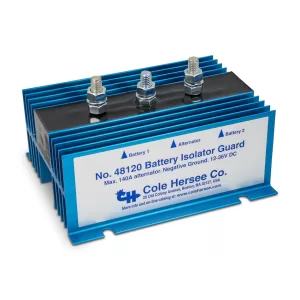
Types of Battery Isolator
- Manual Battery Isolators: Batteries must be manually connected or disconnected with manual battery isolators, which are the most basic kind. Applications for boats and RVs frequently use them.
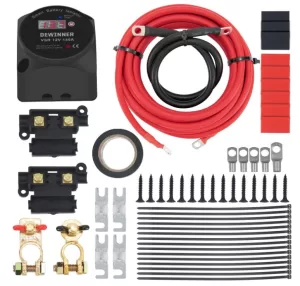
- Relay Battery Isolators: Relay battery isolators automatically connect or disconnect the batteries according to the alternator or battery bank voltage. Increasingly used in marine and recreational vehicle applications, they are more advanced than manual isolators.
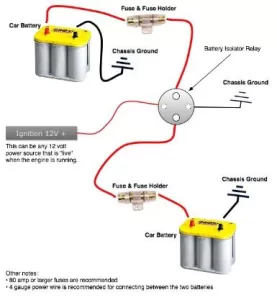
- Diode Battery Isolators: These isolators use diodes to let current flow from the alternator to the batteries in one direction but prevent it from going the other way, from the batteries to the alternator. For batteries in dual-battery systems, they are an easy-to-use and dependable solution.
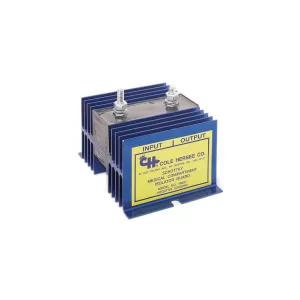
- Solid-State Battery Isolators: These isolators regulate the charging and isolation processes using solid-state parts like FETs or MOSFETs. In comparison to solenoid- or diode-based isolators, they provide minimal voltage drop, faster switching, and efficient power transfer.
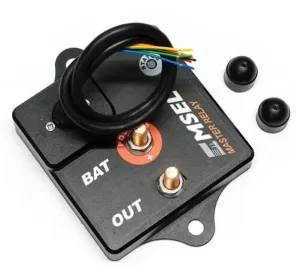
- DC-DC Charge Isolators: In more intricate electrical systems with several battery banks at various voltage levels, these isolators are employed. They eliminate the possibility of backflow when charging the battery banks from the alternator.
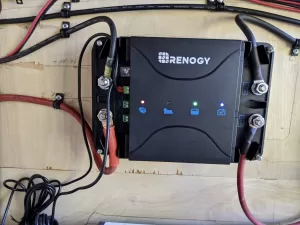
- Emergency Isolators: When it's necessary to quickly cut off power, these isolators are employed. Usually, they are found in emergency vehicles or in industrial settings.
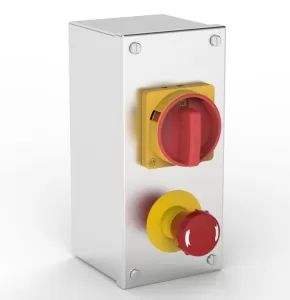
Video related to Battery Isolators
What Does a Battery Isolator Do?
- Charging Mode: The alternator produces electricity when the engine is running, and the isolator permits current to flow from the alternator to the starting battery and the auxiliary batteries. This guarantees that every battery is charged at the same time.
- Discharging Mode: The isolator separates the auxiliary batteries from the starting battery when the engine is off. This guarantees that there is sufficient power left to start the engine by preventing the auxiliary batteries from depleting the starting battery.
- Preventing Backflow: The isolator stops current from returning to the starting battery from the auxiliary batteries. This is important because a dead auxiliary battery has the potential to kill the starting battery and prevent the car from starting.
- Protecting Starting Battery: A battery isolator's main job is to protect the starting battery by making sure it always has enough charge to start the engine. This is especially crucial for cars with dual battery systems since different accessories and equipment are powered by separate auxiliary batteries.
- Maintaining Battery Health: Battery isolators help to keep the entire battery system long-lasting and healthy by preventing the starting battery from being over-discharged and making sure all batteries are properly charged.
Who Installs Isolator Switch?
Isolator switches are typically installed by qualified electricians or electrical engineers. For the safety and proper operation of electrical systems, isolator switches are an essential component, which is why it is so important to install them correctly. Installing isolator switches in residential, commercial, and industrial settings is best left to electricians because they are trained to understand electrical circuits, safety regulations, and proper installation procedures. For isolator switches to operate safely and dependably, installation must adhere to local electrical codes and regulations.How Does a Battery Isolator Work?
- Engine Start and Alternator Activation: The alternator starts producing electricity when the engine starts. To make sure the starting battery has enough energy to start the engine, this electricity is first directed toward it.
- Isolator Activation and Charging: The voltage level in the system increases as the alternator produces more electricity. When it notices this higher voltage, the battery isolator recognizes it and turns on. When the isolator is turned on, it links the backup batteries to the charging circuit so that they can be charged in addition to the starting battery.
- Simultaneous Charging: When the isolator is turned on, the auxiliary batteries and the starting battery are charged at the same time. All batteries receive the power they require to fully charge as long as the alternator keeps producing electricity.
- Engine Shutdown and Disconnect: When the engine is turned off, the voltage in the system decreases and the alternator stops producing electricity. When the voltage drops, the battery isolator detects it and quickly separates the auxiliary batteries from the starting battery.
- Protection of Starting Battery: The isolator stops the auxiliary batteries from using the starting battery for power by disconnecting them. By doing this, you can be sure that the starting battery will have enough energy to start the engine again.
- Preventing Backflow: The battery isolator has a mechanism (usually a diode or a relay) that permits current to flow from the alternator to the batteries in one direction but prevents it from going in the other. As a result, even with higher voltage levels, the auxiliary batteries are kept from draining back into the starting battery.
- Maintaining Battery Health: The isolator helps to maintain the general health and longevity of the battery system by preventing the starting battery from being over-discharged and making sure that all batteries are properly charged. Batteries that have been charged correctly last longer and are less prone to damage.
Where Is the Isolator Switch Located?
An isolator switch's placement is dependent upon the particular electrical system. Isolator switches are frequently found next to the power supply or at strategic locations in the electrical circuit where isolation or maintenance may be necessary.Conclusion
In conclusion, battery isolators are crucial parts of electrical systems that use several batteries. In addition to preventing overcharging, isolating defective batteries, and offering a secure method of disconnecting the batteries in an emergency, they safeguard the starting battery. A battery isolator is a wise purchase that guarantees dependable performance and peace of mind, regardless of whether you're a serious off-road enthusiast or just want to protect your car's electrical system.Populer Posts
EPF10K30ETC144-3
Intel
EP4SGX180KF40I3N
Intel
EP3C80U484C8
Intel
LCMXO3LF-1300E-5UWG36CTR1K
Lattice Semiconductor Corporation
LFSC3GA40E-5FFAN1020I
Lattice Semiconductor Corporation
A3P250-FG144I
Microchip Technology
EP2S30F484I4AB
Altera
EP2SGX85FF1508I4
Altera
EP2C8T144C6N
Intel
EP4CE15E22C7N
Intel
5SGXEA7H2F35I3LG
Intel
